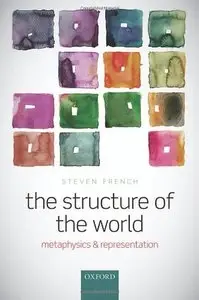The Structure of the World: Metaphysics and Representation by Steven French
English | 2014 | ISBN: 0199684847 | ISBN-13: 9780199684847 | 416 pages | PDF | 2 MB
English | 2014 | ISBN: 0199684847 | ISBN-13: 9780199684847 | 416 pages | PDF | 2 MB
In The Structure of the World, Steven French articulates and defends the bold claim that there are no objects. At the most fundamental level, modern physics presents us with a world of structures and making sense of that view is the central aim of the increasingly widespread position known as structural realism.
Drawing on contemporary work in metaphysics and philosophy of science, as well as the 'forgotten' history of structural realism itself, French attempts to further ground and develop this position. He argues that structural realism offers the best way of balancing our need to accommodate the results of modern science with our desire to arrive at an appropriately informed understanding of the world that science presents to us. Covering not only the realism-antirealism debate, the nature of representation, and the relationship between metaphysics and science, The Structure of the World defends a form of eliminativism about objects that sets laws and symmetry principles at the heart of ontology. In place of a world of microscopic objects banging into one another and governed by the laws of physics, it offers a world of laws and symmetries, on which determinate physical properties are dependent. In presenting this account, French also tackles the distinction between mathematical and physical structures, the nature of laws, and causality in the context of modern physics, and he concludes by exploring the extent to which structural realism can be extended into chemistry and biology.



